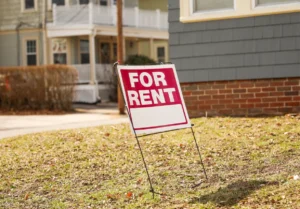What is the biggest risk of real estate investment?

Mitigating Investment Risks in Multifamily Real Estate
To mitigate investment risks in multifamily real estate, employ thorough due diligence practices. Inspect properties for hidden issues, analyze financial records for stability, and align strategies with market trends. Use data-driven decisions to manage risks effectively.
Assess market cycles by evaluating economic indicators and demand dynamics. Implement efficient property management to minimize operational risks. Practice proactive risk management strategies like robust tenant screening and maintenance plans.
Consider risk-sharing through syndication for diversification. Prioritize tenant relationships for enhanced property performance. Guarantee legal compliance meticulously and leverage technology for streamlined processes. This strategy-driven approach safeguards investments thoroughly.
Key Takeaways
- Thorough due diligence practices include property inspections and financial record reviews.
- Analyze market cycles to align investment strategies with economic indicators and demand dynamics.
- Efficient property management reduces operational risks and increases property value.
- Implement proactive risk management strategies like robust tenant screening and preventive maintenance.
- Consider real estate syndication for risk-sharing, access to larger properties, and expert guidance.
Due Diligence Practices
To effectively mitigate investment risks in multifamily real estate, prioritize thorough due diligence practices. When delving into multifamily real estate investments, conducting meticulous property inspections by professional inspectors is paramount.
These inspections reveal any hidden structural, mechanical, or maintenance issues that could turn into costly liabilities down the road. By investing in these inspections upfront, you are proactively managing risks and ensuring the property’s overall health.
Additionally, scrutinizing financial records is essential for risk management in multifamily investments. Reviewing income statements, tax returns, and other financial documents provides insight into the property’s revenue streams, expenses, and overall financial stability. This data-driven approach allows you to make informed decisions based on the property’s financial performance and potential for future growth.
Furthermore, studying market trends is essential for mitigating risks in multifamily real estate. Understanding the local market dynamics, supply and demand trends, and rental rates empowers you to align your investment strategy with market conditions.
By staying informed about market trends, you can adapt your investment approach to maximize returns and minimize risks associated with fluctuations in the real estate market.
In essence, thorough due diligence practices encompass property inspections, financial record reviews, and market trend analysis, all of which are essential components of effective risk management in multifamily real estate investments.
Market Cycle Assessment
Analyzing market cycles in multifamily real estate involves evaluating economic indicators, housing supply, and demand dynamics to strategically time entry and exit strategies for best investment outcomes.
Market cycles directly impact rental rates, occupancy levels, and property values in the multifamily sector. By examining market cycles effectively, investors can anticipate potential risks and opportunities in the multifamily market.
Understanding economic indicators such as GDP growth, employment rates, and interest rates is essential in predicting market cycles. Housing supply and demand dynamics play a critical role in determining the phase of the market cycle, influencing investment decisions.
High demand coupled with limited supply typically leads to increased rental rates and property values, indicating a peak in the market cycle. On the other hand, oversupply can result in decreased occupancy levels and lower property values, signaling a downturn.
Get a Free Multifamily Loan Quote
Access Non-Recourse, 10+ Year Fixed, 30-Year Amortization
Efficient Property Management
Understanding how efficient property management practices impact investment returns is essential for success in multifamily real estate. Efficient property management encompasses various aspects such as thorough tenant screening, proactive maintenance strategies, and responsive communication channels.
By focusing on these key areas, property managers can minimize operational risks and maximize returns on investment.
Implementing professional property management services can greatly enhance the efficiency of managing multifamily properties. Leveraging the expertise of professionals in the field can lead to streamlined operations, shorter vacancies, and ultimately higher tenant satisfaction. This, in turn, contributes to increasing property value over time.
One of the primary goals of efficient property management is to maintain high tenant satisfaction levels. Satisfied tenants are more likely to stay longer, reducing turnover costs and vacancy periods. Additionally, proactive maintenance plans not only safeguard the longevity of the property but also enhance its overall appeal to potential tenants, thereby attracting higher rental rates.
Proactive Risk Management Strategies
Implementing proactive risk management strategies is essential in safeguarding your multifamily real estate investments against potential uncertainties and maximizing long-term returns. To start, robust tenant screening processes are vital. By thoroughly vetting potential tenants, you can greatly reduce the risk of unreliable renters and potential income loss, ensuring a stable cash flow for your property.
Additionally, incorporating preventive maintenance strategies is key to controlling costs and extending the life of your property. Regular upkeep not only enhances the property’s value but also minimizes unexpected expenses, contributing to a higher return on investment over time.
Diversifying your investments across various locations and property types is another effective risk management strategy. This approach helps mitigate the impact of local market fluctuations, reducing overall portfolio risk.
Partnering with professional property management services can also enhance the profitability of your multifamily real estate investments. These services offer expertise in tenant relations, maintenance coordination, and financial management, reducing your workload while optimizing property performance.
Lastly, maintaining proactive legal compliance programs is essential. Ensuring that your properties adhere to all regulations and laws minimizes risks and potential legal issues, safeguarding your investment. By taking a proactive approach to risk management, you can protect your property and optimize its financial performance in the long run.
Risk-Sharing Through Syndication
Real estate syndication presents a strategic opportunity for investors to pool resources and collectively share risks in multifamily property investments. By participating in syndication, investors can access larger multifamily properties and deals that might be beyond their individual reach. This pooling of resources not only enables diversification but also helps in spreading risks across multiple investors.
One of the key advantages of real estate syndication is the opportunity to benefit from the expertise of experienced syndicators. These professionals bring in-depth knowledge of property management, acquisitions, and operations, which can help mitigate individual risk and enhance the overall investment strategy.
Furthermore, syndication plays a crucial role in managing risks associated with market fluctuations and unforeseen challenges in multifamily investments. Through transparent structures that outline responsibilities, profit-sharing arrangements, and exit strategies, syndication provides clarity and risk management for all parties involved.
In essence, real estate syndication offers a pathway for investors to not only access diverse multifamily investment opportunities but also to share risks, leverage expertise, and navigate market dynamics with greater confidence and transparency.
Maintaining Tenant Relationships
Effective tenant relationship management plays a pivotal role in enhancing rental property performance and mitigating risks in multifamily real estate investments. By prioritizing tenant engagement and promptly responding to maintenance requests, landlords can boost satisfaction levels and increase retention rates.
In today’s digital age, where 89% of renters turn to online review sites for property evaluations, maintaining positive tenant relationships is vital.
Open communication channels with tenants are essential for addressing issues swiftly and preventing negative reviews that could harm the property’s reputation. Proactive property management strategies, such as conducting regular surveys and collecting feedback, can greatly enhance the overall tenant experience and reduce potential risks.
Building strong tenant relationships not only fosters a positive living environment but also leads to higher lease renewal rates. This, in turn, lowers turnover rates and minimizes vacancy risks associated with multifamily real estate investments.
By focusing on proactive communication, attentive maintenance, and creating a positive tenant experience, landlords can ensure tenant satisfaction, increase lease renewals, and ultimately mitigate investment risks.
Legal Compliance Measures
To safeguard your multifamily real estate investment and minimize risks, meticulous attention to legal compliance measures is imperative, encompassing adherence to zoning regulations, rent control laws, and tenant rights.
Legal compliance in multifamily real estate goes beyond these basic requirements and extends to ensuring adherence to fair housing laws and environmental regulations. Failure to comply with these laws can lead to costly legal issues and reputational damage in property management.
Staying informed about local codes, regularly updating lease agreements to reflect current regulations, and maintaining adequate insurance coverage are essential components of legal compliance. By proactively addressing these aspects, you not only reduce the likelihood of legal disputes but also foster positive tenant relationships and enhance the overall stability of your investment.
The escalating average legal verdicts in real estate from 2015 to 2019 underscore the importance of prioritizing legal compliance measures. Embracing technology solutions such as Leonardo247’s Municipal Code Tool can streamline the process of staying compliant with evolving regulations, thereby mitigating potential legal risks in your multifamily real estate ventures.
Remember, investing in legal compliance today is an investment in safeguarding your future returns and property value.
Frequently Asked Questions
What Is Mitigation of Investment Risk?
Mitigation of investment risk involves gauging risk tolerance, diversifying your portfolio, conducting due diligence, analyzing markets, protecting assets, managing risks, implementing investment strategies, planning finances, and preserving capital. By staying informed and adapting, you can effectively reduce potential financial losses and maximize returns.
How Do You Manage Investment Risk?
Evaluating risk is key in managing investments. To navigate uncertainties, diversify wisely, research markets, and conduct thorough due diligence. Monitor assets, cash flow, and have a clear exit plan. Understand your risk tolerance, consider investment horizon, and perform financial analyses. Remember, ‘Fortune favors the bold.’ Embrace freedom in your approach to managing investment risks effectively.
What Is the Biggest Risk of Real Estate Investment?
Market fluctuations pose the biggest risk in real estate investment. These shifts impact property values and rental income, affecting profitability. Economic downturns can lead to increased vacancy rates, reducing rental demand. Interest rate fluctuations influence financing costs and investment returns. Regulatory changes can alter property values and operational costs. Inadequate property management may result in tenant turnover, property damage, and decreased profitability. Be aware of these risks when considering real estate investments.
What Are the Risks of Multifamily Syndication?
Market fluctuations, tenant turnover, economic downturns, property management, interest rates, regulatory changes, capital reserves, competition pressure, natural disasters, and oversupply risk all pose potential threats in multifamily syndication. Understanding these risks is critical for informed decisions. Conduct thorough due diligence, diversify investments, maintain adequate reserves, and stay attuned to market trends to navigate these challenges successfully. Stay proactive, adaptable, and strategic to mitigate risks effectively in this dynamic investment landscape.
Conclusion
Congratulations, you have now mastered the art of successfully maneuvering through the treacherous waters of multifamily real estate investment risks. By diligently conducting due diligence, evaluating market cycles, and implementing efficient property management strategies, you have successfully mitigated potential pitfalls.
Remember, in the world of real estate, knowledge is power and proactive risk management is key. Keep up the good work and continue to maintain strong tenant relationships while staying compliant with legal regulations. Happy investing!
Source: Multifamily Mentor













 Accessibility
Accessibility